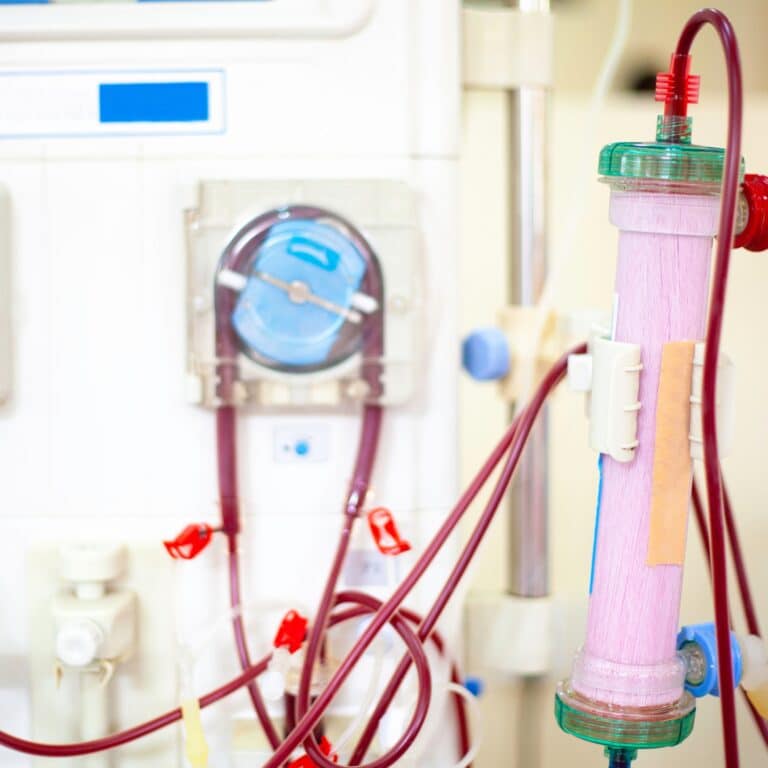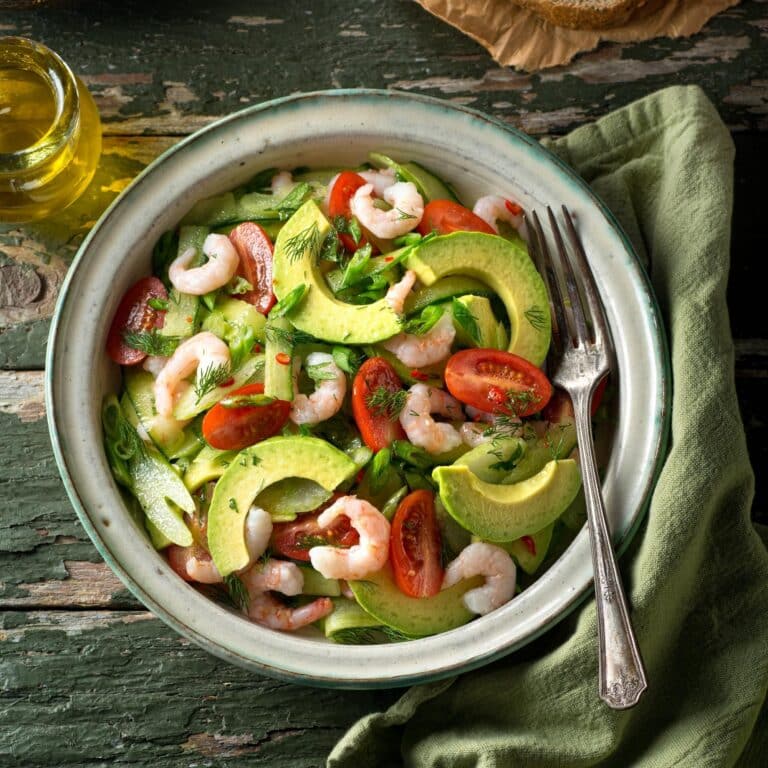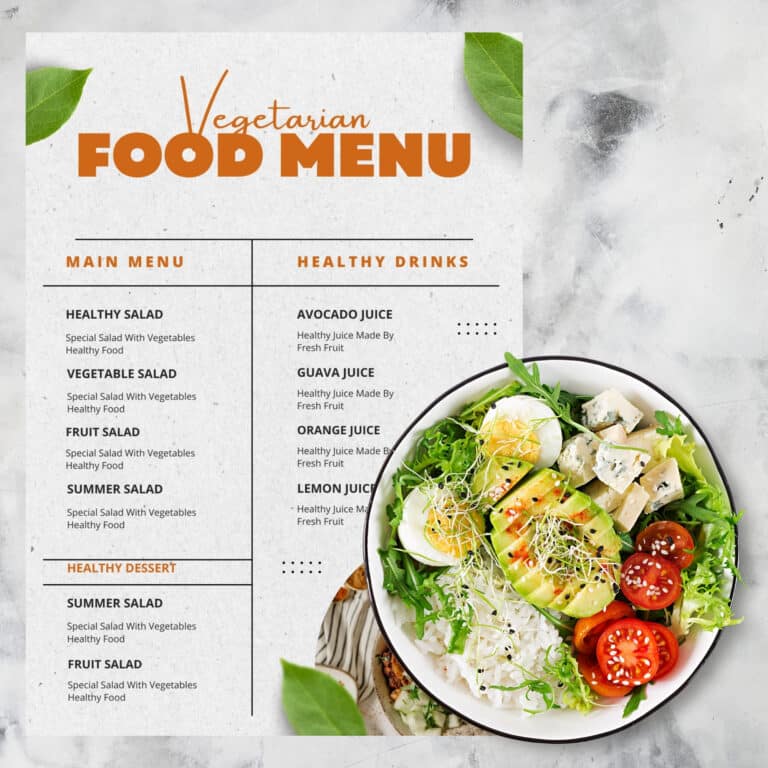Should I Eat White Bread Or Wheat Bread On A Kidney Diet?
Everyone’s dietary needs are different and if you're on a kidney diet, it's important to know what to eat.
So the question is: should I eat white bread or whole grain bread? We'll answer this important question in this article!
First of all, let me tell you that both types of bread have their pros and cons when it comes to eating them while adhering to a kidney-friendly diet.
White bread has some benefits due to its lower phosphorus content; however, wheat bread may be better for overall health because it contains more fiber and nutrients than white bread does.
You can usually find the amounts of calories, protein, fat, and carbohydrate as well as sodium, fiber and potassium on the food label. We can also answer if sourdough bread is good for CKD patients!
Looking at the nutrition facts label, review the ingredient list for items with a -phos as part of the word like disodium phosphate. This indicates added phosphorous and you want to choose a different product if you can.

It really depends on your individual dietary needs as well as your preferences. In general, though, whole grain wheat is usually considered the healthier option — so we’ll explore why it might be best for those with kidney issues as well as provide tips on how to make sure you get enough nutrition from whichever type of bread you choose.
You may have heard not to eat whole wheat bread on a kidney diet, especially on dialysis or as you get closer to stage 5 kidney disease. Many parts of the kidney diet are confusing. There are dialysis diet restrictions you should pay attention to.
You might have heard how much better it is to get a high fiber diet from all the other sources of nutrition information you have that are not related to kidney diets, but sometimes this is not the best course for your kidney diet plan.
You may have started to realize how much “unlearning” you now have to do in your meal planning since you have to avoid certain foods or eat more of others. In addition, these may be foods you once loved. You can avoid kidney failure with dietary changes.
Do you have to give up on wheat bread or not? Read on to learn more about sodium content and potassium in whole wheat bread and how that affects what you should be eating (a great podcast to listen to that involves whole wheat bread).
Jump to:
- Health Benefits Of White Bread
- Health Benefits Of Whole Wheat Bread
- Impact Of Grains On Kidney Function
- Nutritional Content Of Different Types Of Breads
- Can I Make Bread Without Salt?
- Potassium Content In White And Wheat Breads
- Recommended Serving Sizes For A Kidney Diet
- Alternatives To White And Wheat Breads On A Kidney Diet
- Which Bread Is Good For Kidney Patients?
- Questions About Bread And CKD
- Eating Healthy Is Important For Your Kidney Diet Meal Plan
Health Benefits Of White Bread
White bread is often a preferred choice for those on a kidney diet, as it contains less potassium than wheat bread.
Low-potassium white breads are available in many grocery stores and online sources, making them easy to find. The amount of potassium in white bread depends on the type of flour used; however, most varieties contain only small amounts compared with whole wheat or multi-grain options.
When selecting a white loaf for your diet plan, look for enriched versions that contain additional nutrients like calcium or vitamin D which can help you maintain healthy bones even if you’re avoiding other dairy-based foods.
Furthermore, there are some brands that offer reduced carbohydrate content and improved texture due to special baking techniques - both factors that make eating white bread an enjoyable experience!
Health Benefits Of Whole Wheat Bread
The tables have turned and it’s time to take a deep dive into the health benefits of wheat bread for kidney patients.
To put it simply, there are numerous nutritional advantages that make this type of bread an excellent choice when dealing with chronic kidney disease.
The issues with bread are related to potassium and phosphorus. As your kidneys begin to decrease in function, their ability to process those two items can wreak havoc if not well controlled.
You can usually eat potassium (tips for a low potassium diet) and phosphorus (low phosphorus foods) without a problem until your doctor tells you to decrease or limit your intake – if you are not on dialysis.
If you are on dialysis, you will be told to limit them to a certain amount related to how your blood work looks.
Foods that are less processed retain much of their potassium and phosphorus naturally. So, the whole grain/ whole wheat bread product has more potassium and phosphorus.
It depends on how much you eat and how much potassium and phosphorus your doctor said you should eat in a day.
You can eat whole wheat bread without a lot of worries if you manage the rest of your diet without much potassium and phosphorus.
Next up, let’s talk about fiber content. It goes without saying that whole grains provide far more dietary fiber per serving than refined flour products such as white bread. This nutrient is invaluable when it comes to maintaining healthy digestion and regularity – not to mention lowering cholesterol levels and helping control blood sugar spikes.
This decision isn’t just limited to sandwiches either; switching out white pasta for whole grain pasta can also offer some remarkable health benefits while still tasting great! Understanding how pasta and kidney disease work can be done!
So if you’re looking to improve your daily nutrition despite any drawbacks posed by a kidney condition, opt for wheat instead of white every chance you get — you won’t regret it!
For More Recipes and Ideas --->> Get Your Free Meals and Recipes That Are Perfect for Pre-Dialysis Diets, Pre-Dialysis with Diabetes, or Dialysis Diets.

Impact Of Grains On Kidney Function
When considering a kidney diet, it can be difficult to determine which grains are best. Whole wheat bread is often recommended due to its high fiber content and lower glycemic index.
This makes it an ideal choice for those with diabetes, as well as those on a renal diabetic diet. However, there are some potential drawbacks of consuming slices of bread in excess when dealing with kidney disease.
Whole grain breads contain higher amounts of essential vitamins and minerals such as iron and magnesium that are important for overall health. Furthermore, they may help reduce the risk of developing chronic diseases like heart disease or stroke by providing necessary nutrients while controlling blood glucose levels.
Whole wheat bread is low in potassium compared to other grains such as quinoa or barley. Does quinoa have potassium? This is important because many people living with kidney disease must limit their intake of foods high in potassium to prevent complications from fluid retention and electrolyte imbalances.
Eating plenty of whole grains has been linked to better kidney function, reduced inflammation markers associated with poor health outcomes, and improved cholesterol values over time.
It’s also beneficial for weight management since these types of foods tend to provide more satiety than processed carbohydrates like white flour products do.
Thus, when choosing between white bread or whole wheat bread on a kidney diet, opting for the latter can have numerous benefits for your body’s overall wellbeing and long-term health goals.
Making small adjustments toward eating healthier carbs—like switching from refined sources to nutrient-rich whole grain options—can make all the difference in helping manage symptoms associated with kidney disease and improving quality of life down the road!
Nutritional Content Of Different Types Of Breads
Bread is a staple of many diets around the world, and the nutrition labels can vary greatly depending on the type.
White bread, whole wheat, sourdough, pumpernickel, rye, potato, and other types of bread may differ in the amount of calories, protein, fat, carbohydrates, sodium, potassium and phosphorus they contain. The following table outlines the nutritional content of various types of bread on a per-serving basis.
For example, you might be wondering if rye bread is good for kidney patients? Looking at the chart below, you can see that it has a reasonable amount of potassium and phosphorus, so unless your doctor has told you to limit that nutrient, it's a great bread to eat with CKD.
| Type of Bread | Serving Size | Calories | Protein | Carbohydrate | Fat | Sodium | Potassium | Phosphorus |
| White | 2 slices | 140 | 5g | 25g | 2g | 220mg | 45mg | 45mg |
| Whole Wheat | 2 slices | 140 | 6g | 25g | 2g | 220mg | 80mg | 45mg |
| Sourdough | 2 slices | 160 | 6g | 25g | 3g | 230mg | 70mg | 55mg |
| Pumpernickel | 2 slices | 140 | 4g | 26g | 1g | 180mg | 80mg | 60mg |
| Rye | 2 slices | 160 | 7g | 28g | 3g | 300mg | 80mg | 45mg |
| Potato | 2 slices | 160 | 4g | 28g | 4g | 320mg | 70mg | 100mg |
One of the tricks that companies do is to make a “wheat” bread which is not whole wheat and not as nutritious.
The wheat bread that is not whole wheat bread is very similar nutritionally to white bread, so if you want to eat brown bread that is labeled “wheat” and not “whole wheat” you would count it the same as white bread.
To be sure it’s not whole wheat, make sure it has less than 1 gm of fiber per slice. Whole wheat bread has 1-2 gm of fiber per slice.
Eating bread as part of your diet is a great choice when you notice the extended shelf life of bread and the ability to freeze it for use later if you are living alone and don't eat an entire loaf in a week.
Can I Make Bread Without Salt?
Salt is an essential ingredient when it comes to baking bread. It adds flavor and enhances the flavor of the other ingredients. It also helps to control the fermentation process, which is essential for good bread.
Salt also helps to strengthen the gluten proteins in the dough, which gives it structure and helps to keep it from becoming too dense or heavy. Salt also helps to keep the bread from becoming too dry, as it helps to retain moisture. Without it, bread can become hard and dry.
Salt also helps to slow down the yeast's activity, which can help to ensure that the dough has enough time to rise properly. This is important as it helps to ensure the bread has the right texture and flavor.
Without salt, the yeast would be too active and the bread could become too dense. Salt also helps to control the pH level of the dough, which helps to create the right environment for the yeast to do its work.
Overall, salt is an essential ingredient in baking bread. It helps to shape the dough and gives it a great flavor. It also helps to control the fermentation process and the pH level.
Without it, bread would be dry, dense, and lack flavor. It is important to use the right amount of salt when baking bread, as too much can make it too salty, while too little can make the bread flavorless.
If you're interested in how to season your other food, you can learn how to season food without salt.
Potassium Content In White And Wheat Breads
Potassium is another essential mineral that must be taken into consideration when deciding which type of bread to eat on a kidney diet.
Potassium can accumulate and cause problems for people with certain types of kidney disease, so it’s important to know which type of bread has the most potassium.
Depending on the levels of potassium in the blood, diets, and renal diet restrictions by stage of CKD can vary in terms of what should be limited.
Patients with high levels of potassium should limit intake of high potassium foods such as bananas, oranges, potatoes, tomatoes, and leafy greens. Patients with low levels of potassium should continue to limit sodium and protein intake but not be concerned with levels of potassium in foods.
For patients in early stage kidney disease, a low-potassium diet is generally recommended only if they have elevated levels of potassium in their blood, while those in more advanced stages may need to limit potassium even further.
Additionally, patients on dialysis (what to expect with dialysis) should limit their overall potassium intake and be especially mindful of high-potassium foods. It is important to consult with a healthcare professional to determine the appropriate diet for each stage of CKD.
White bread does not have as much potassium as other grain-based products like wheat or rye. Wheat bread tends to have more than white bread due to its higher content of whole grains and bran; however, some brands offer low potassium versions specifically tailored towards those following a renal diet.
No matter what kind of bread you choose, always read the nutritional label carefully before purchasing as there can often be huge differences between brands and varieties—the healthiest option may surprise you!
Additionally, consult with a doctor or nutritionist if unsure about how much potassium should be consumed on a daily basis while following a kidney diet plan.
Recommended Serving Sizes For A Kidney Diet
When considering bread for a renal diet, it's important to be mindful of serving sizes. Wheat bread is generally the best choice as it is higher in grams of fiber and other nutrients than white bread.
Sourdough bread can also be beneficial for kidney patients, as long as it is consumed in moderation.
For people with chronic kidney disease (CKD) with or without diabetes, the recommended number of servings of grains or grain products is 6-8 servings per day.
It is important to choose whole grains when possible as they provide essential nutrients such as fiber, B vitamins, and minerals. Eating whole grains can also help control blood sugar levels and reduce the risk of heart disease.
People with CKD and diabetes should also reduce their intake of refined grains such as white bread, white pasta, and white rice, as these can cause an increase in blood glucose levels. Knowing how to eat on a CKD Diet plan can help you be successful on this diet!
Additionally, it is important to limit or avoid foods with added sugars, such as cereals and snack bars. Eating a variety of grains and grain products can help ensure a balanced diet for people with CKD and diabetes.
It's important to pay attention to nutritional labels when selecting a brand of wheat or sourdough bread for consumption on a renal diet. Look for low-sodium options with minimal added ingredients such as sugar substitutes, preservatives, and colors.
Additionally, check if any specific instructions are given regarding portion size – certain brands may require half a slice rather than one full slice depending on individual needs.
Alternatives To White And Wheat Breads On A Kidney Diet
Having discussed the pros and cons of white and wheat breads on a kidney diet, it's time to move onto other alternatives that offer similar deliciousness with fewer health risks.
Fortunately, there are numerous options available for those who need to monitor their potassium intake while still enjoying a delicious slice of toast or sandwich.
| Type of Bread | Serving Size | Calories | Protein | Carbohydrate | Fat | Sodium | Potassium | Phosphorus |
|---|---|---|---|---|---|---|---|---|
| Rice Bread | 1 slice | 80 cal | 1g | 17g | 1g | 70mg | 30mg | 15mg |
| Cornbread | 1 slice | 70 cal | 2g | 12g | 2g | 130mg | 25mg | 15mg |
| Oat Bran Bread | 1 slice | 70 cal | 3g | 10g | 2g | 140mg | 40mg | 10mg |
| Almond Flour Bread | 1 slice | 90 cal | 3g | 7g | 5g | 70mg | 45 mg | 15mg |
In addition to being low in potassium content, these alternative grain-based foods also provide essential nutrients like grams of fiber, vitamins B6 and E which benefit overall health. Always check the ingredients list for added amounts of phosphorus.
Kidney disease can be difficult to manage through diet alone but fortunately eating certain types of nutritious yet kidney friendly bread may help make life easier. Pairing bread with other kidney friendly meals will make your life so much easier!
With so many varieties readily accessible at supermarkets or grocery stores nowadays, there’s no reason why everyone should have difficulty getting hold of suitable low-potassium items!
Which Bread Is Good For Kidney Patients?
When it comes to choosing the best bread for kidney disease, we have to consider white and whole wheat.
Both are popular choices in today’s diet but with different nutrient profiles. So which one is better? Let's take a look at what each type of bread has to offer.
White bread is made from refined grains that have been stripped of most of their healthful nutrients like fiber, vitamins and minerals. It does not contain much potassium or phosphorus, two important minerals for people with kidney disease.
That said, it can still be part of an overall healthy diet if you monitor your intake carefully and choose brands that are high in fiber. It's important to create smart goals for chronic kidney disease and you can do this with white bread.
Whole wheat bread, on the other hand, contains more nutritional value than white because it retains all its parts - particularly the bran and germ where many essential nutrients reside.
It also has more fiber than white bread and surprisingly enough, doesn't contain too much potassium. This makes it a great option for those with kidney problems who need to keep their nutrition balanced while avoiding foods high in potassium such as bananas and potatoes.
Ultimately the decision between white or whole wheat comes down to personal preference and dietary needs. If you find yourself needing less potassium and phosphorus then go for white.
However if you're looking for extra nutrition then opt for whole wheat instead! Ultimately both types can fit into a healthy lifestyle when consumed in moderation so don't feel limited by either choice.

Questions About Bread And CKD
When it comes to making dietary decisions, one of the most important considerations is the glycemic index value.
The glycemic index measures how quickly carbohydrates in certain foods break down into glucose and enter your bloodstream. So what are the values for white and wheat breads?
White bread tends to have a higher glycemic index than wheat bread because it’s made with refined grains that digest more quickly. This means that if you eat white bread, your blood sugar levels will rise faster than they would if you ate wheat bread.
On the other hand, whole-grain wheat bread has a much lower glycemic index due to its complex carbohydrates which take longer for your body to break down and convert into glucose.
For those on a kidney diet, choosing wheat over white bread may be beneficial as this can help keep blood sugar levels stable throughout the day while also providing essential nutrients like fiber and B vitamins.
Understanding these differences between white and wheat breads can help ensure that people make informed choices when selecting food that best support their overall health needs.
When it comes to following a kidney diet plan, making informed food choices is key.
One of the questions that can come up when considering what you should eat is whether there are other grain options available besides white and wheat breads.
This article will explore several alternative options for those looking to diversify their grains while adhering to a kidney-friendly diet.
For those who may be familiar with gluten-free diets, quinoa is an excellent option. Quinoa (quinoa renal diet) has higher protein and fiber content than standard white or wheat breads and does not contain any gluten.
It also contains essential minerals like magnesium, iron, and zinc which are important for overall health. Additionally, quinoa has a low glycemic index value so it won’t cause your blood sugar levels to spike as much as some other foods might.
Oats are another great source of dietary fiber and they can help lower cholesterol levels due to the high amounts of beta-glucan found in them. You can easily learn about oatmeal and kidney disease!
Oats are also packed with nutrients such as B vitamins and folate which can aid in digestion, promote healthier skin and hair, and boost energy levels.
Furthermore, oats have a lower glycemic index than regular wheat bread but still provide plenty of carbohydrates for sustained energy throughout the day.
So if you’re on a kidney-friendly diet but don't want to settle for only white or wheat breads, consider adding quinoa or oats into your meal plan!
Both these grains offer multiple nutritional benefits plus they're tasty too! With just a few simple swaps here and there, you'll be able to enjoy meals that keep both your taste buds -and kidneys- happy!
When deciding which type of bread is best for your dietary needs, it’s important to look beyond just carbohydrates and fiber content. For example, vitamins and minerals may need to be taken into account as well.
Both wheat and white flour contain iron and magnesium, but whole wheat has more of both than its processed counterpart. Additionally, whole grains typically have higher levels of essential fats like omega-3 fatty acids that help protect against heart disease.
There are many different factors that come into play when selecting the right kind of bread for one's diet - not merely grain options alone!
With careful consideration about nutrient composition and potential risk factors such as sodium level, anyone on a kidney diet can make an informed decision about their food choices without sacrificing flavor or nutrition.
Listen to this podcast to get even more tips on kidney diet meal prepping tips.
When it comes to following a following a pre-dialysis renal diet, the type of bread you choose can have an important impact on your overall health.
There are several types of white and wheat bread that may be recommended for this specific dietary need. To help make sense of which option is best for you, let's take a look at some key considerations when selecting the right kind of bread:
Fiber Content: Whole grain wheat contains more fiber than white bread, making it a good choice if your goal is to add more fiber into your diet. On the other hand, white bread has fewer calories and offers less protein as well.
Sodium Level: Many varieties of wheat or white breads contain high amounts of sodium which can be detrimental to someone with kidneys functioning below optimal levels.
It’s important to read labels carefully so you know what you’re getting in terms of salt content when picking out the right kind of bread for your diet needs.
Taste Preferences: Ultimately, the decision about which variety of bread to buy should come down to personal preference; if whole grain wheat doesn't sound appealing because of its denser texture or taste profile, then white might be a better fit for you regardless of nutritional values.
Quality Ingredients: As with any food item, quality matters just as much as quantity when it comes to choosing healthy options such as various types of grains and flour-based loaves.
Look for those that don't contain artificial preservatives or added sugars - these will provide greater nutrition benefits no matter what type they are!
Whichever kind you decide upon in the end, always remember that freshness and quality ingredients play a big part in optimizing nutritional value while also providing great flavor too!
By being mindful about these factors before buying any type of loaf, whether it’s wheat or white, you'll find one that meets all your dietary requirements without sacrificing taste along the way.
Eating Healthy Is Important For Your Kidney Diet Meal Plan
When it comes to choosing between white and wheat bread for a kidney diet, there are several factors that should be taken into account. First, we need to consider the glycemic index values of both types of breads.
Wheat bread tends to have a lower glycemic index value than white bread, which can help keep blood sugar levels in check. Additionally, other grain options such as rye or spelt may provide additional health benefits.
Furthermore, when picking out varieties of white or wheat breads, look for those that contain more fiber and less added sugars and sodium. This will ensure you're getting the most nutritional benefit from your chosen type of bread.
Finally, making dietary modifications is important for people with kidney disease; this includes limiting processed foods, watching portion sizes closely, and consuming a balanced diet composed of nutrient-rich whole grains, fruits, and vegetables.
You can see right away that whole wheat bread has more protein, potassium, and phosphorus per slice, but less sodium and carbohydrate. It’s a tradeoff, and if you are on dialysis, then it’s probably very important to consider.
But prior to dialysis if your doctor has not recommended a low potassium or low phosphorus diet, you can continue to eat the whole grain wheat pieces of bread and get more fiber until you are told differently by your doctor. Check out this 7 day meal plan for kidney disease.
Selecting what type of bread to eat on a kidney diet requires taking many variables into consideration; however, following these tips can ensure you make an informed decision that's good for your overall health and well being!














Can the sprouted grains bread like Ezekiel be eaten?
I had kidney cancer last summer and had my left kidney removed July of 2016. I was just diagnosed with Stage 3b CKD. Scared and confused.